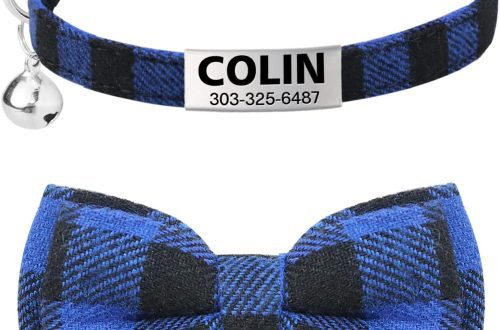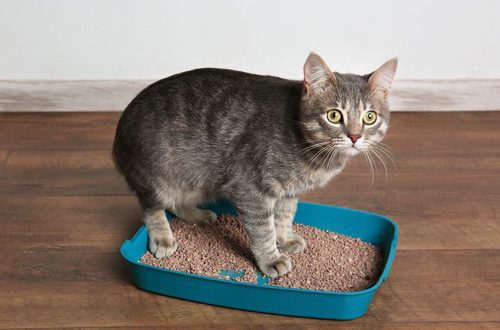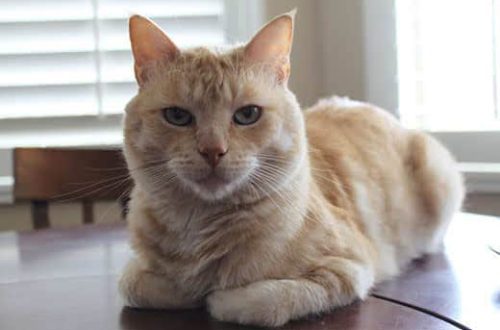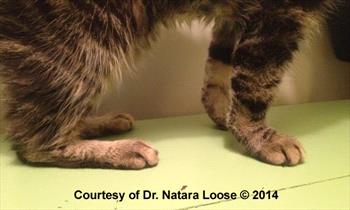
The cat walks on the heels: what does it mean
If a furry friend is affectionate to the point of obsession and walks around on his heels, he may have a clingy character. Whether this is good or not depends on the personal perception of such attachment and the reason for such behavior.
Some consider any cat that exhibits more dog-like behaviors to be clingy. Such forms include following family members around the house, greeting at the door, showing special tenderness. However, some cats are pathologically obsessive. How to understand the difference?
Contents
Signs of excessive obsession in cats
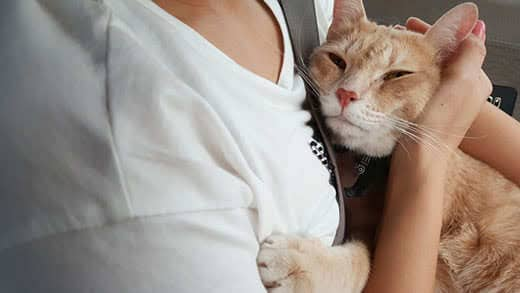
The cat relentlessly follows the owner, including to the toilet.
Tries to climb onto owner every time he sits or lies down.
He constantly meows to get attention.
Requires caresses from the owner when he tries to focus on something else.
Refuses to eat when the owner is not around.
He behaves shyly and does not leave the owner when guests come.
Is offended or hides when the owner is about to leave, or rubs against the legs, trying to keep him.
Too actively rejoices when the owner returns home.
Goes to the toilet past the tray and shows other forms of destructive behavior.
Why do some cats tag along and meow?
Perhaps the cat is just a sticky character: some thoroughbred pets, such as Siamese and Abyssinian, are known for their obsession. But in some cases, it can be a sign of a problem. It is important to find out what exactly causes this behavior. An animal may become clingy for one or more of the following reasons:
Boredom
As Petbucket suggests, the pet may be chasing the owner because she lacks mental and physical stimulation. In this case, taking breaks to play with the cat and buying interactive toys can help. They will keep her active and entertain her throughout the day.
Premature weaning and separation from mother
A kitten can develop separation anxiety if it is weaned or taken from its mother too early. Babies usually switch from breast milk to solid food at about eight weeks of age. But if a kitten is given to a new family immediately after weaning, he may not receive important socialization skills from his mother and siblings. They will be useful to him in adulthood to be more confident and independent.
Feeling insecure
Cats love stability and any change in routine or environment can make them feel insecure. A move to a new home, the arrival or loss of another pet, a family member, or the return of children to school after a long vacation can be enough to make a pet feel the need for constant contact.
Cats rescued from the street may also need a lot of petting and comfort before they feel truly welcome in their new home.
Desire to comfort the owner
Cats are very sensitive to people’s moods and emotions. Perhaps the pet feels that its owner is going through difficult times. He just wants to be there to comfort and make sure his adult friend is okay.
pregnant owner
Some cats have an uncanny ability to sense that a woman is pregnant. They become extremely affectionate with her throughout her pregnancy, according to Catspro.com. How exactly cats determine this remains a mystery, but if the owner is expecting a child, it should not be surprising that the cat will follow her on her heels from early pregnancy.
Lack of established boundaries
Some cats act compulsively simply because they are spoiled. If the owner spoils the pet, indulging all her desires, he will reinforce the clingy, demanding behavior. It will also teach her how to easily manipulate people to get what she wants, writes All About Cats.
Health problems
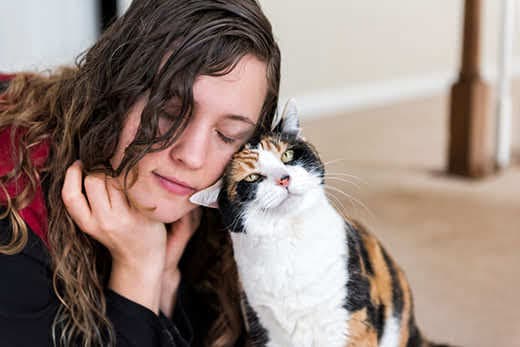 A cat can become exceptionally affectionate and need extra attention as a result of a neurological condition called cerebellar hypoplasia (CM). It is usually accompanied by problems with balance and lack of coordination.
A cat can become exceptionally affectionate and need extra attention as a result of a neurological condition called cerebellar hypoplasia (CM). It is usually accompanied by problems with balance and lack of coordination.
While some people enjoy having a very affectionate pet, others find the overly intrusive and demanding behavior annoying. In such a case, some steps must be taken to help the animal become less clingy and more self-reliant.
If a normally aloof cat suddenly becomes clingy, you should look for other signs that may indicate a health problem. As a general rule, if your pet is experiencing drastic changes in behavior, it is best to consult a veterinarian.
How to help an overly obsessive cat
If a cat constantly follows the owner and this becomes a cause for concern, steps should be taken to help her become more independent:
Identification of causes. Cats are so sensitive to change that even seemingly minor changes like buying a new couch or rearranging furniture can cause them stress. Therefore, it is important to connect detective skills and establish the reason for this behavior.
Consultation with a veterinarian. If there is a possibility that the cat’s behavior is related to health problems, it is necessary to make an appointment with the veterinarian. The specialist can also help determine if separation anxiety is the result of premature weaning and advise on how to manage it.
Setting and maintaining rigid boundaries. You need to close the door to the bathroom and toilet behind you, do not rush to fulfill every demand of the cat and allow it to sit on your lap only on your own terms.
- Game time planning. Give your cat toys that will keep her busy while everyone else is busy or no one is home. You can install a cat perch next to a window with a more lively view so that your furry pet can watch birds and people. If this is not possible, you can search the Internet for animal videos that will help keep your cat entertained while your pets are busy doing other things.
Consider getting another cat. Although some pets prefer to be the only ones in the family, it is useful for an animal with a clingy personality to have a furry friend nearby to keep him company. This is especially true for a cat that has become compulsive after losing another pet.
Characteristics of character
Do not rush when choosing a pet. You should carefully study the characteristics of the breeds in order to know in advance what to expect. It is important for the owner to evaluate whether he has the time and energy for a very affectionate and potentially clingy cat.
Before you take a pet from a shelter, it is better to visit the cat you like several times. This will help to understand how she will behave when she moves to a new house. Sometimes pets need time to really develop their character. Therefore, the closer you get to know the cat before you bring it home, the better.
If the future owner plans to adopt a kitten from a shelter, you can ask the shelter staff to leave him with his mother for up to three months. This will give him time to wean naturally and gain the necessary socialization skills with his feline family.
Of course, any person is pleased when a cat is affectionate and wants to be with him. But everything is good in moderation. By taking simple steps that teach your pet to be more independent, you can become happier, and in the long run, make an important contribution to the health of your pet.



